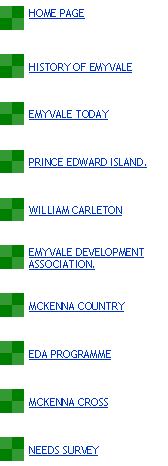|
The McKenna Headquarters was at Tully Fort and Crannog, 1Km east of Emyvale, on the road to Glaslough, and these fortifications remained in position until they were completely destroyed in three successive English invasions - in 1602 (following the defeat at Kinsale), in 1642 and in 1643. Their final defeat came at the Battle of Drumbanagher (near Glaslough) in March 1688.
The McKenna name has remained the dominant surname in the area ever since.
The most historic monument in the North Monaghan area must be
'The McKenna Cross'
For further information on McKenna Country, Click on the McKenna Coat of Arms.
|
|



